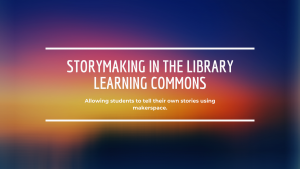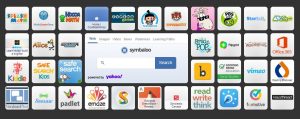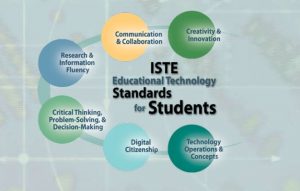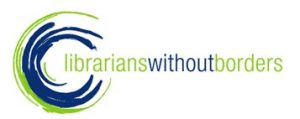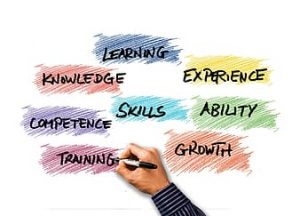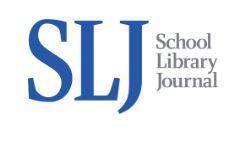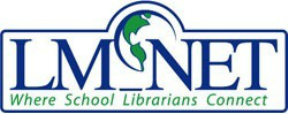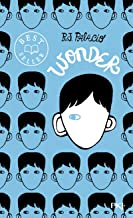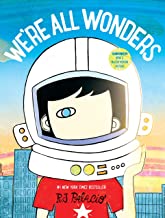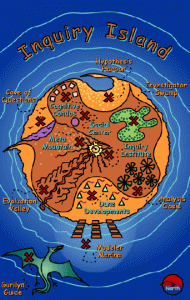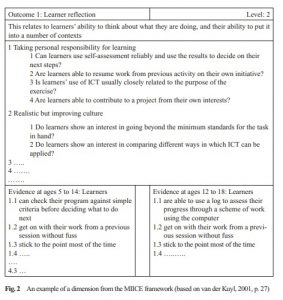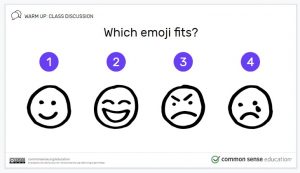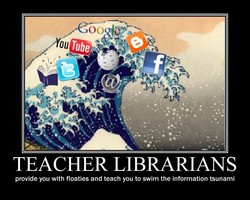
Linking ideas for Teacher Librarian advocacy through the modules of LLED 462:
Over the years, there has been great shifts in the level of importance expressed for Teacher Librarians and libraries by the government. Before the BCTF collective agreement and numbers were reinstated, classroom teachers had gotten used to functioning independently and surviving without sufficient support from Teacher Librarians. When I first began as a Teacher Librarian, I quickly realized that classroom teachers were reluctant to work with me and rely on my support because there was a fear that it would be taken away again. Now, I feel like I have gained the trust and respect from classroom teachers as I have built relationships and proven that I have expertise to assist them in innovative learning endeavors in their classrooms. However, I also know that part of my job is to constantly display how essential my job is by continuously advocating for the importance of Teacher Librarians and the Library Learning Commons space to be used correctly. I have also realized that having specific research and data to back-up my claims strengthens my case when I am faced with a challenge. Therefore, I am thankful for this final module and all of the evidence advocating for the continued importance of Teacher Librarians.
In this final module of the course, the following issues were highlighted as areas of concern and reasons why schools cannot do without highly qualified Teacher Librarians and a designated Library Learning Commons.
Without a fully-functioning Library Learning Commons with an adequate number of books per student and a highly qualified Teacher Librarian, students cannot reach their full potential. If children are impoverished, they probably don’t have access to sufficient nourishment let alone books; however, as Stephen Krashen explains, “Access to a library with 500 books or more balances the effect of poverty ” (Krashen, 2020). In addition, a highly qualified Teacher Librarian knows how to aid in pairing individuals with resources to suit their needs even if they don’t know what they are looking for. Having extensive knowledge of the library collection, available resources and patrons makes Teacher Librarians “Effective readers’ advisers [because they] understand that their success depends on familiarity with a range of books, as well as with their patrons” (Parrott, 2017). As well, each time the Teacher Librarian “… sees the child, she’ll inquire about the selections, which titles the student enjoyed (or didn’t), further refining understanding of the reader” (Parrott, 2017). Connecting students to books that are of interest to them to promote the love of reading is essential to future success in that “The more people read for pleasure, the higher their literacy scores. Free voluntary reading (silent reading) is associated with higher literacy rate” (Krashen, 2020). Therefore, Teacher Librarians and sufficient time for the Teacher Librarian in the Library Learning Commons is vital to student success because “The more school librarians per child, the higher the reading score ” (Krashen, 2020).
Teacher Librarians teach students how to think for themselves by teaching information literacy skills. Teacher Librarians “… are building on the potential of school libraries to enable students to become informed and engaged citizens and effective contributors to our society and our economy, through the acquisition of life skills, of information literacy strategies, and of dispositions for flexibility, creativity, and innovation” (Oberg, 2014). Teacher Librarians teach student which resources to use to find the information they are searching for and how to combine those facts in order to make informed decisions.
Teacher Librarians address social justice issues. In Hillary Clinton’s speech to the ALA she states, “The third reason why we need libraries is because we need critical thinkers more than ever. …librarians were teaching media literacy…you help learners of all ages sort out truth from fiction and how to build an argument based on rational evidence” (CNN, 2017). She goes on to say “…as Librarians, once again, you have to be on the front lines of one of the most important fights we have ever faced…the fight to defend truth and reason, evidence and facts”(CNN, 2017). Students need to develop critical literacy skills in order to be able to question their moral beliefs and not necessarily simply follow an individual because they are in a position of power because “Democracy does not, in fact, depend solely upon the rule of the majority; it depends upon the understanding that the majority should be subject to questions and that minority values and views will be tolerated where they do not cause significant harm” (McLaughlin, 2012). Teacher Librarians expose students to resources and teach them how to navigate information to discern if it is the truth or not.
Teacher Librarians foster community building. Hillary Clinton also emphasizes “Why we need libraries more than ever because they are places for communities to come together” (CNN, 2017). In a school, the Library Learning Commons and the Teacher Librarian are one of the only places and people that all students visit and they see through each grade. The Library Learning Commons connects all individuals in the school not only through books but also school wide events and initiatives. The Teacher Librarian is fortunate to be able to know all of the students and teachers in the school and see them develop and grow from year to year and this directly relates to my next point.
Teacher Librarians and the Library Learning Commons promotes wellness for patrons. Many Teacher Librarians feel like they aid in the wellbeing of patrons by providing a safe space with a caring, individual who they have built a relationship with over the years and connects them with books that make them happy. Unfortunately, this information is purely based on observations so in the article “How Can School Libraries Support Student Wellbeing?”, Merga argues that “There is also a need for more research around libraries as safe spaces to be subject to peer review, as searches of the literature around libraries as safe spaces are more heavily weighted toward anecdotal work rather than research” (Merga, 2020, p.663). There is research to support that “The regular reading of fiction is associated with the development of prosocial characteristics such as empathy and perspective taking (e.g. Mar et al., 2009), and book reading can be used as both a mental health and social support by adult readers” (Merga, 2020, p.665). Therefore, if a Teacher Librarian is the individual who promotes and connects patrons with books of interest then “School librarians can also support students to engage with literature in meaningful and healing ways” (Merga, 2020, p.665).
Checklist of key issues for advocacy and how I will address these issues:
- Provide equal access to resources and information. By giving all students access to books and digital tools, no matter their backgrounds or circumstances at home, it provides opportunities for students to see new possibilities for their future. For example, in “The Bookmobile” video, Julie Zammarchi explains that simply having access to books and hearing a librarian explain that “The more you know about something, the less you will fear it”, helped her learn that there was life outside of where she lived and so was able to leave it. Promoting the library and library programs through the school newsletter and a 24/7 online participatory library learning commons will help to inform all patrons of the potential of the Library Learning Commons and provide more opportunities for developing multiple literacies.
- Continue to promote community building in a space that is safe and inclusive area for all learners. Offering school-wide activities and initiatives through the library connect all of the individuals in the school. For example, events such as D.E.A.R., Battle of the Books, Bookfairs and read-a-thons brings the entire school community together for a common purpose. One aspect that I will be incorporating into my Library Learning Commons space that all patrons will have access to is a makerspace because “Libraries and makerspaces serve the common goal of building community. Communities of interest and practice are brought together and maintained through the design of communal space to promote sociality and collaboration (while also providing spaces for individual work)” (Weisgrau, 2015). By providing a makerspace that has enough open-ended possibility allows all students access at multiple levels. By providing opportunities such as makerspace perfectly positions future-ready learning opportunities because “Proponents of maker spaces argue that such environments address a unique package of complementary 21st century skills and aptitudes such as creativity, innovation, transmedia navigation, visual literacy, and (if based in technology) computational thinking—the kind of skills identified by the Institute of Museum and Library Services in their report on museums, libraries, and 21st century skills (2009)” (Bowler & Champagne, 2016).
- Push for collaboration time with classroom teachers: Collaborating with classroom teachers and individuals throughout the school district promotes community and improves students learning because “Improved schools are collaborative in their thinking and practices” (Oberg, 2014). However, classroom teachers need to have specific collaboration time with the Teacher Librarian to co-plan units for optimum success. There needs to be administrator support for this release time and it is my job to advocate for the importance of the release time so that more teachers will be encouraged to work with me. I am thankful for the evidence that “Teachers, teacher-librarians, and principals – learning and working together – support and facilitate improvements in teaching and learning” (Oberg, 2014). Students need to see constant modelling of collaborative behaviours between adults in order to successfully collaborate as well.
- Constantly offer and highlight multi-modal texts and ways to express and communicate learning. Students may use digital platforms on a daily basis but that does not mean they are using it responsibly, productively and to its full potential. In addition, most times children use media resources in the same way each time. Without guidance and suggestions from a knowledgeable individual, students tend to communicate ideas in a similar fashion if they don’t know other possibilities. For example, “The work of Ito et al. (2010) certainly suggests that young people can achieve a level of criticality with regard to their digital creations but that many struggle to do so without the support of adults. Maker spaces, where young people work side-by side with knowledgeable mentors, might be a powerful crucible for developing personal and social awareness with regard to the creation and use of technology” (Bowler & Champagne, 2016, p.119). This is another way that the issue of teaching students information literacy skills helps them to be successful constructivist thinkers by helping them find the tools and resources to be able to solve problems with innovative solutions.
- Promoting new ways of learning. Inclusive literacy involves teaching about and touching on all literacies including traditional literacies, media literacy, digital literacy and critical literacy. One way to touch on critical literacy is to practice inquiry-based teaching and learning techniques. Although inquiry-based teaching and learning has been in practice for a while now, many teachers are not sure how to implement the techniques. Therefore, “British Columbia Teacher-Librarians’ long-standing engagement with inquiry-based learning, literacy instruction and information and communication technologies (ICT) potentially positions them to effectively assist classroom teachers and students navigate ongoing shifts in curriculum aims, literacy approaches and technological applications within changing school settings (Robinson, 2011; Ekdahl & Zubke, 2014)” ( Hales and Beaudry, 2018, p.13). I find teachers at my school need assistance in implementing simple inquiry techniques that tweak the ways they are already teaching to make it inquiry-based. I feel like my expertise as a Teacher librarian can assist uncertain classroom teachers to begin weaving in these techniques because “As the new millennium continues, educators find themselves in need of new literacy practices and instructional approaches that will provide support for students as they navigate the challenges of multimodal texts, digital environments, and new forms of texts, for example, blogs, wikis, text messages, and hypertexts” (Serafini, 2012, p.29). As well, classroom teachers need exposure to new technologies and ways to promote new possibilities for student learning. Therefore, a Teacher Librarian needs to be aware of new research findings and affectively communicate and promote new ideas.
- Print-based text just as important that ever! Although Teacher Librarians promote the use of new technologies, it is still as important as in the past to promote physical books and adequate physical space. When advocating for the Library Learning Commons and why a physical space is necessary, it is best to have specific evidence and research to back it up. For example, there is always the argument that book will become obsolete because everything is moving to digital platforms. As Teacher Librarians, we feel strongly about the need to maintain print-based books but I feel like I need to have specific evidence to back up my claims in order to be taken seriously. Therefore reading the article “Being a better online reader” gives evidence that “While the backgrounds of the writers varied, a theme began to emerge: the more reading moved online, the less students seemed to understand” (Konnikova, 2014). I found the examples given for why comprehension is less when reading online very compelling such as “On screen, people tended to browse and scan, to look for keywords, and to read in a less linear, more selective fashion. On the page, they tended to concentrate more on following the text”(Konnikova, 2014). Before reading this article, I had heard that information retention is higher when reading print over digital text but I didn’t have any specific evidence to that and now I do.
- Conduct my own personal inquiries and collect evidence for continued advocacy for the Library Learning Commons and Teacher Librarians: An inquiry-based research model is an effective method of collecting evidence for advocacy such as was used in the BCTF article ““Renaissance delayed: supporting early career teacher-librarians in British Columbia”. I like the idea of Action Research (AR) as explained as “… teacher-driven education inquiry that acknowledges the practitioner as “knower and agent for educational and social change” (Cochran-Smith & Lytle, 2009, p. 8)—in this case, participating BCTLA and BCTF union members” (Hales and Beaudry, 2018, p.4). For example, Merga’s article ” How Can School Libraries Support Student Wellbeing?” concludes that “ Promising findings on how school libraries operate as safe spaces for young people; promote and resource mental health and wellbeing initiatives; and, support and promote bibliotherapeutic practices and reading for pleasure, suggest that these, amongst other areas of relevance, can be useful starting points for furthering this research agenda ” (2020, p.670). I also believe that the Library Learning Commons and Teacher Librarians promote student well-being and the only evidence that I have is anecdotal; however, as I stated in relation to promoting print materials, these claims would be better supported with evidence. Therefore, I was contemplating how to collect specific evidence for advocacy and, at the moment, I believe that something such as action research and a specific inquiry would be the most effective for collecting evidence for topics such as fostering student wellness in the Library Learning Commons.
In conclusion:
I feel as if many classroom teachers are not used to having a Teacher Librarian at their disposal and therefore do not know how to fully utilize the resource. Each year, I need to promote myself and remind classroom teachers of the endless possibilities of ways that a Teacher Librarian can support them, their students and the school at large. I found this visual from another TL that summarizes the main ways that TLs can support classroom teachers. A poster like this would be beneficial to have displayed by the circulation desk or shared at a professional development day.
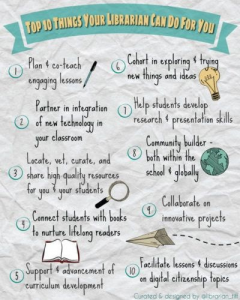
In the time we are presently in, I see it as more important that ever to advocate for Teacher Librarians as access to books, reading for pleasure and access to a knowledgeable individual that can connect all parts of the school community with suitable books, resources and other materials that meet their needs, promotes wellness by relieving stress for individuals.
I will continue to advocate for Teacher Librarians not only because it is my “dream job” but because I believe if we can actually achieve the vision that is set up for the Teacher Librarian, it will lead to higher student achievement, more classroom teacher satisfaction and overall school environment.
Works cited:
Bowler, L., & Champagne, R. (2016). Mindful makers: Question prompts to help guide young peoples’ critical technical practices in maker spaces in libraries, museums, and community-based youth organizations. Library and Information Science Research, 38(2), 117-124.
CNN. (2017). Hilary Clinton full ALA Conference speech [Video]. Retrieved 28 November 2020, from https://youtu.be/S8OEAPSFp4c.
Hales, A. and Beaudry, L.. (October 2018). “Renaissance delayed: supporting early career teacher-librarians in British Columbia.” BCTF. Retrieved from: https://bctf.ca/uploadedFiles/Public/Publications/ResearchReports/RenaissanceDelayed/2018%20Renaissance%20Delayed-Research%20Report.pdf .
Konnikova, M. (2014, July 16). Being a better online reader. Retrieved from http://www.newyorker.com/science/maria-konnikova/being-a-better-online-reader .
Krashen, S. (2014, January 16). Dr. Stephen Krashen defends libraries at LAUSD Board Meeting [Video]. Retrieved 28 November 2020, from https://youtu.be/JAui0OGfHQY.
McLaughlin, D. (2012). The King of Denmark and the Naked Mole Rat: Teaching Critical Thinking for Social Justice. Edcan.ca. Retrieved 28 November 2020, from https://www.edcan.ca/articles/the-king-of-denmark-and-the-naked-mole-rat-teaching-critical-thinking-for-social-justice/.
Merga, M. (2020). How Can School Libraries Support Student Wellbeing? Evidence and Implications for Further Research, Journal of Library Administration, 60:6, 660-673,Retrieved from: https://www.tandfonline.com/doi/full/10.1080/01930826.2020.1773718 .
Mighty Little Librarian. (2020). Top 10 things your librarian do for you [Image]. Retrieved from http://www.mightylittlelibrarian.com/?p=1388.
Oberg, D. (2014). Ignoring the evidence: Another decade of decline for school libraries. Education Canada, 54(3). Retrieved from: http://www.cea-ace.ca/education-canada/article/ignoring-evidence-another-decade-decline-school-libraries .
Parrott, Kiera. (August 28, 2017). Thinking outside the bin: why labeling books by reading level disempowers young readers. Retrieved from: http://www.slj.com/2017/08/feature-articles/thinking-outside-the-bin-why-labeling-books-by-reading-level-disempowers-young-readers/#_ .
Quote master. (2020). Teacher Librarians [Image]. Retrieved 8 November 2020, from https://www.quotemaster.org/school+librarians.
Weisgrau, Josh. (2015, September 24). School libraries and makerspaces: can they coexist? Retrieved from:http://www.edutopia.org/blog/school-libraries-makerspaces-coexist-josh-weisgrau.
Zammarchi, Julie. (April 13, 2016). “The Bookmobile.” StoryCorps. Retrieved from: https://www.youtube.com/watch?v=11OvHcgh-E.
